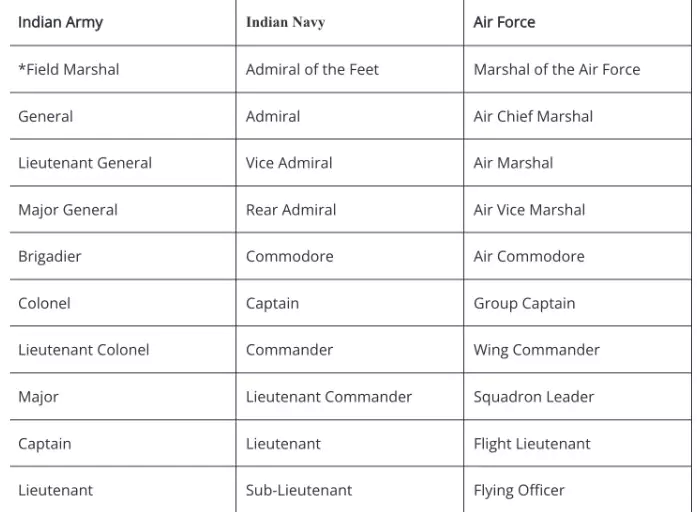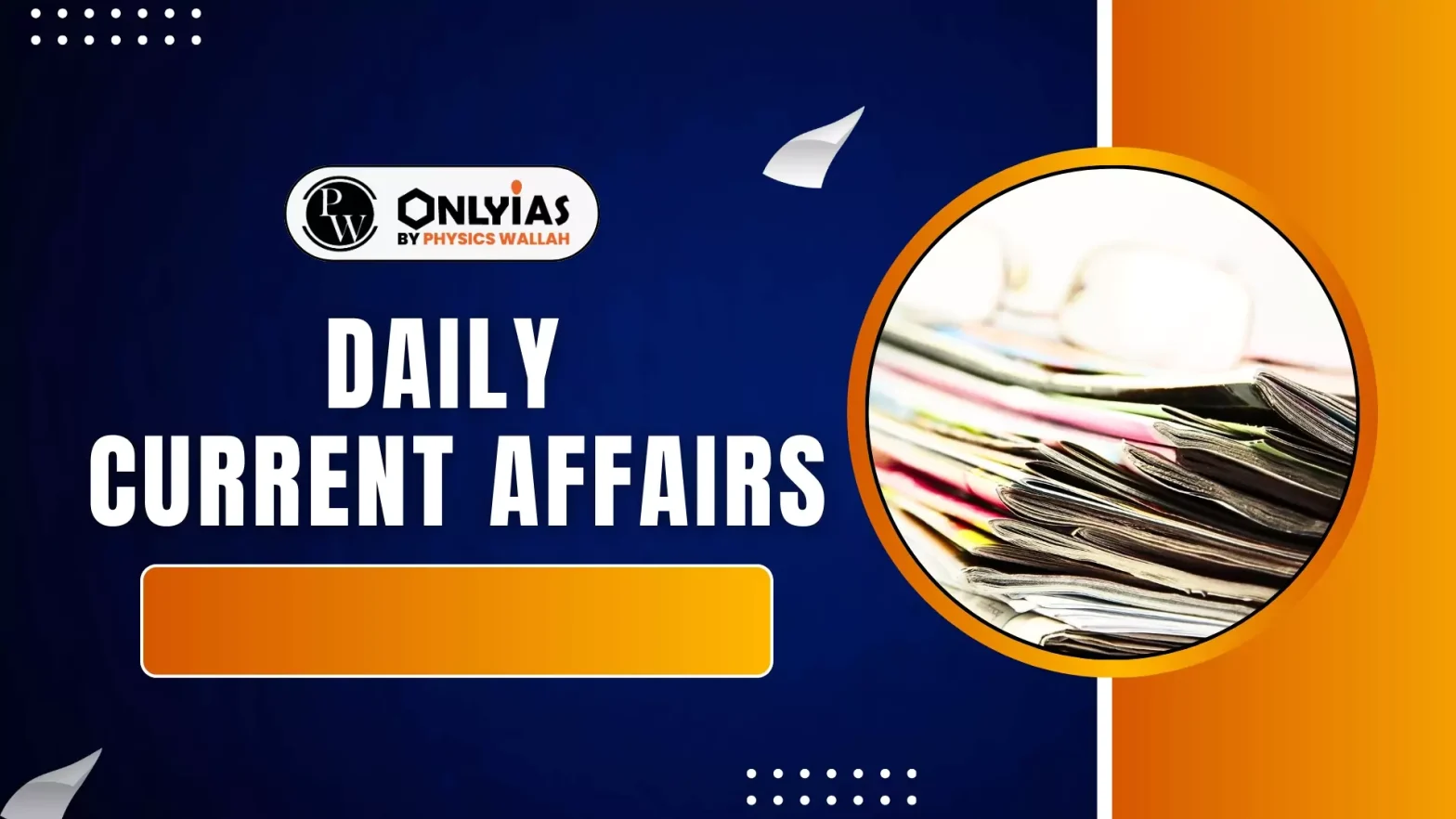The concept of Integrated Theatre Commands (ITCs) is a landmark defence reform aimed at restructuring the Indian Armed Forces to ensure jointness, efficiency, and preparedness for future conflicts.
- The debate over this restructuring plan was evident at a recent seminar at the Army War College, highlighting differing opinions within the military leadership.
- Air Chief Marshal A P Singh advised against hastening the theaterisation and recommended establishing a joint planning and coordination center in Delhi to promote jointness among the services.
- Admiral Dinesh Kumar Tripathi expressed the Navy’s commitment to integrating its capabilities with the Army and Air Force to align with the theatre command objectives.
- Chief of Defence Staff (CDS) General Anil Chauhan emphasized addressing any internal “dissonance” regarding the formation of theatre commands.
What is Integrated Theatre Command?
- About: An ITC is a unified structure where Army, Navy, and Air Force assets operate under a single commander for a specific geographical area.
- Purpose: Ensures faster decision-making, improved combat effectiveness, and integration of modern war-fighting domains like cyber and space.
Existing Command Structure in India
- Single-Service Commands: Army and IAF currently have seven commands each, and the Navy has three (Total 17)
- Tri-Service Commands: There are two tri-service commands: Andaman & Nicobar Command (ANC, 2001) and Strategic Forces Command (SFC, 2003), which manages India’s nuclear arsenal.
- Headquarters Integrated Defence Staff (HQIDS): It was created after the Kargil conflict to fulfil the need for an institutional framework for higher management of defence.
- Duplication Issue: Multiple commands across services lead to delays, inefficiency, and fragmented operations.
Jointness vs Integration
- Jointness means the three services maintain their independent identities but coordinate in war.
- Example: Army and Air Force coordinating for an airstrike in a land battle, while still reporting separately to their Chiefs.
- Integration goes a step further by merging command structures and making the services part of a composite fighting unit.
- In integration, there is unity of command – a single commander, instead of multiple chiefs, decides on strategy and execution for a theatre.
- This reduces duplication, avoids conflicting orders, and creates a cohesive war-fighting machine.
|
Countries with Established Theatre Commands
- United States: It operates under Unified Combatant Commands, dividing global operations into geographical and functional commands.
- Examples: INDOPACOM (Indo-Pacific Command), CENTCOM (Central Command), and EUCOM (European Command).
- China: It reorganized its military into five theatre commands in 2016, including Western (focused on India border security), Eastern (Taiwan and Pacific operations), Southern (South China Sea), Northern (Russia and Korea), and Central (domestic security).
- Russia: It integrates land, air, and naval forces under these commands for strategic defense.
- It operates four military districts, functioning as theatre commands, as Western, Southern, Central and Eastern Military District.
- United Kingdom & France: They have joint operational commands for overseas deployments.
Rationale for Theatre Commands
- Modern Warfare: Multi-domain nature of warfare (Land, Sea, Air, Cyber, space) requires coordinated responses.
- Example: In the 2022 Russia–Ukraine war, cyber-attacks were launched on Ukraine’s power grids and communication systems before missiles hit physical targets.
- Integration for Future Conflicts: Joint planning critical for countering drone strikes, missile attacks, and cyber offensives.
- Example: Countering drone attacks, as seen in Operation Sindoor (2025), needs joint, integrated operations
- Resource Optimisation: Avoids duplication of logistics and infrastructure across services.
- Example: At present, wings of the three services are spread across Mumbai and its suburbs and operate separately
- Combat Efficiency: A single commander enhances battlefield decisions, reducing time lags.
- Kargil Lesson: The Kargil conflict highlighted lack of coordination between services, prompting reforms.
Historical Evolution of Theatreisation in India
- Kargil Review Committee (1999): Kargil Review Committee, 1999 recommended creation of integrated theatre commands and Chief of Defence Staff (CDS)
- Naresh Chandra Committee (2012): Suggested strengthening higher defence management.
- Shekatkar Committee (2016): committee suggested reducing 17 service-specific commands to 3 integrated theatre commands:
- Northern Command → China border (Focus on Ladakh, Arunachal, Tibet).
- Western Command → Pakistan border (Punjab, Rajasthan, J&K).
- Southern Command → Maritime domain (Indian Ocean, Bay of Bengal, Arabian Sea).
- Aim: Enhance combat potential while also re-balancing defence expenditure.
- 2019: PM Modi announced the post of Chief of Defence Staff (CDS).
- 2019 (Dec): Union Cabinet approved the creation of the post of CDS in the rank of a four-star general
- Department of Military Affairs (DMA): CDS would head the Department of Military Affairs (DMA) to be created under the Defence Ministry as its secretary. DMA was mandated to:
- Promote jointness in procurement, training, and staffing for the services through joint planning and integration of their requirements;
- Facilitate the restructuring of military commands for optimal utilisation of resources by bringing about jointness in operations, including through the establishment of joint/ theatre commands; and
- Promote the use of indigenous equipment by the services.
- 2023: Inter-Services Organisation (Command, Control & Discipline) Act : The act empowers the commander-in-chief and the officer-in-command of inter-services organisations with disciplinary and administrative powers over personnel from the other services serving in them.
- ISO: Central government may constitute an ISO with personnel belonging to at least two of the three services: Army, Navy and Air Force.
- Existing ISOs (Andaman & Nicobar Command, Defense Space Agency, and National Defense Academy) shall be deemed to be constituted under the Act.
- Commanding Officer (CO): Provides for CO to command a unit, ship, or establishment, who can initiate all disciplinary or administrative actions over personnel.
- Applicability: To all personnel of the Army, Navy, and Air Force, and to persons of other forces as notified by the Central Government.
- 2024: Mumbai is planned to become the first tri-service common defence station, and joint logistics nodes are being established nationwide to streamline supply chains and postings.
Chief of Defence Staff (CDS)
- Chief of Defence Staff (CDS) is the principal military authority and senior-most appointment of the Indian Armed Forces.
- Duties and functions of the Chief of Defence Staff (CDS) include the following:
-
- To head the Department of Military Affairs in Ministry of Defence and function as its Secretary.
- To act as the Principal Military Advisor to Hon’ble Raksha Mantri on all Tri-Service matters.
- To function as the Permanent Chairman of the Chiefs of Staff Committee
- To administer the Tri-Service organizations/agencies/commands.
- To be a member of Defence Acquisition Council chaired by Hon’ble Raksha Mantri.
- To function as the Military Advisor to the Nuclear Command Authority.
- To bring about jointness in operation, logistics, transport, training, support services, communications, repairs and maintenance, etc of the three Services.
- To ensure optimal utilisation of infrastructure and rationalise it through jointness among the Services.
- To implement Five-Year Defence Capital Acquisition Plan and Two-Year roll-on Annual Acquisition Plans, as a follow up of Integrated Capability Development Plan.
- To assign inter-services prioritisation to capital acquisition proposals based on the anticipated budget.
- To bring about reforms in the functioning of three Services with the aim to augment combat capabilities of the Armed Forces by reducing wasteful expenditure.
- The CDS does not exercise military command over the three services.
- Recently, Defence Minister Rajnath Singh authorised the Chief of Defence Staff (CDS) & Secretary, DMA to issue Joint Instructions and Joint Orders for all three Services.
- Marks a shift from the earlier system, where orders involving two or more Services were issued separately by each Service.
|
Commissioned officers in the Indian Army, the Indian Air Force, and the Indian Navy

Steps Already Taken Towards Jointness
- Cross-Postings: Officers posted across services to build synergy.
- Joint Logistics Nodes: Established in multiple locations for efficiency.
- Procurement Reforms: DMA ensures joint acquisition planning.
- Training: Initiatives for shared training modules among services.
Challenges in Implementing Theatre Commands
- Dismantling Legacy Structures: Transitioning from 17 service-specific commands (functioning for 70+ years) to theatre commands means dismantling entrenched systems and hierarchies.
- Lack of Joint Doctrine: Divergent service cultures hinder consensus.
- IAF’s Concerns: Fear of fragmentation of scarce air assets across multiple theatres. (31 squadrons vs. Sanctioned 42).
- Air power is seen as a strategic, not just supporting, arm.
- Risk of diluting doctrinal flexibility and increasing decision-making layers.
- Resource Constraints: Navy’s limited budget and outdated equipment like MiG-21s weaken integration.
- Infrastructure Gaps: Border areas lack roads, rail, and logistics to support forward operations.
- Command Hierarchy Issues: Potential friction between theatre commanders and service chiefs.
- Career Progression Concerns: Officers worry about rank equivalence and promotion pathways.
- Perception of Army Dominance: Fear that Army’s size and budget may overshadow other services.
- Technology Deficit: Weakness in cyber, space, ISR (Intelligence, Surveillance, Reconnaissance) compared to China.
- Two-Front Threat: Need readiness for simultaneous conflict with China and Pakistan.
- Differing Perspectives of IAF Chiefs:
- ACM R.K.S. Bhadauria (Retd): Committed to jointness but cautioned against treating IAF as only a support force.
- ACM V.R. Chaudhary (Retd): Supported theatre commands but insisted they must be future-ready (space, cyber warfare) and avoid adding bureaucratic layers.
- ACM Singh (2025): Favoured jointness, but warned against blindly copying US/foreign models, stressing India’s unique requirements.
Benefits of Theatre Commands
- Efficiency: Rationalisation of war-fighting resources.
- Operational Freedom: Theatre commanders can operate independently of service chiefs.
- Neutralising Chinese Threat: Counters PLA’s Western Theatre Command, operational since 2016.
- Cost-Effectiveness: Unified procurement and planning reduce long-term costs.
- Strategic Clarity: Creates cohesive structures instead of fragmented command setups.
About C4ISR
- C4ISR is an acronym for Command, Control, Communications, Computers, Intelligence, Surveillance, and Reconnaissance
- C4ISR capabilities provide operators with a decisive advantage in the field. By combining technology, communication, and intelligence, these systems enable:
- Faster response times
- Improved mission planning and execution
- A unified understanding of the operational environment
- This integration is critical in complex, multi-domain operations.
|
Way Forward
- Unified Doctrine: Develop a joint warfighting doctrine led by the CDS.
- Phased Implementation: Start with pilot projects (e.g., air defence, maritime) before full rollout.
- Modernised C4ISR: Invest in indigenous, secure, interoperable command and control systems.
- Infrastructure Push: Border Roads Organisation (BRO) and Vibrant Villages Programme must fast-track connectivity.
- Joint Training Institutions: Expand tri-service war colleges and integrate service academies.
- Parliamentary Oversight: Dedicated defence committee for continuous monitoring.
- Talent-Based Leadership: Theatre commanders chosen by expertise, not service bias.
- Modular Force Structure: Shift from bulky divisions to smaller, networked brigades for agility.
Conclusion
Theatre commands represent a paradigm shift in India’s military doctrine. While consensus exists on the need for jointness, hasty implementation without resolving structural, cultural, and resource challenges could weaken effectiveness.
- As India faces an uncertain security environment, ITCs will enhance preparedness, efficiency, and synergy, making India’s defence forces future-ready.
![]() 8 Sep 2025
8 Sep 2025


